Emergency Commercial Mold Remediation: 5 Proven Steps San Antonio Businesses Need Now

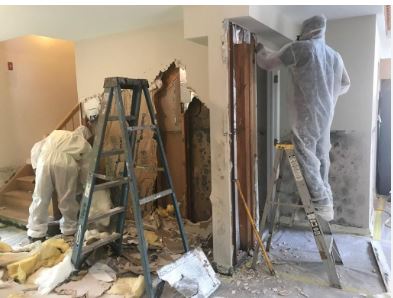
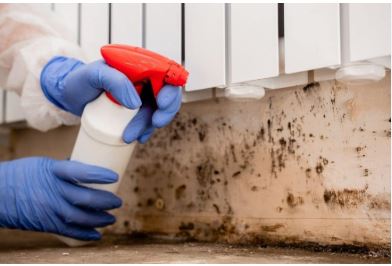
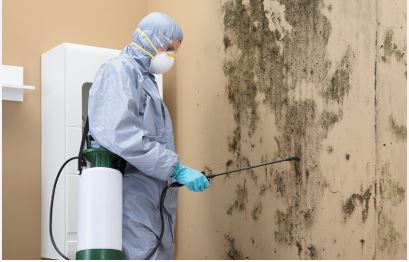
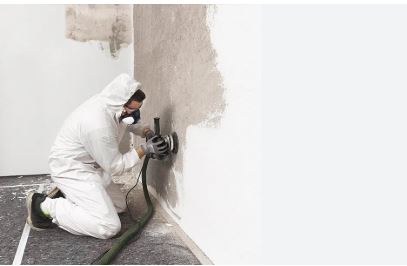
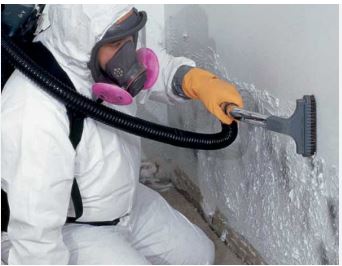
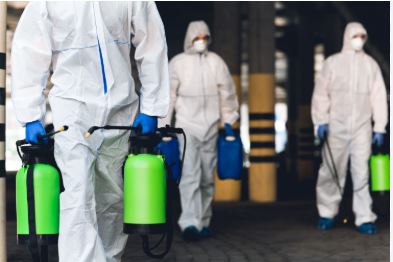
Commercial mold remediation becomes a critical business priority when mold growth threatens employee health, damages property, and disrupts operations. San Antonio’s humid subtropical climate, with average humidity levels exceeding 70% during summer months, creates ideal conditions for rapid mold proliferation that can spread throughout commercial buildings within 48-72 hours of water intrusion, potentially costing businesses tens of thousands in damage, lost productivity, and health-related liabilities.
Table of Contents
Why Commercial Mold Remediation Demands Immediate Action in San Antonio
San Antonio’s unique climate creates a perfect environment for aggressive mold growth that can devastate commercial properties within days. The combination of high humidity, frequent temperature fluctuations, and seasonal flooding creates conditions where mold spores can quickly establish colonies and spread throughout building systems.
Commercial mold remediation requires immediate professional intervention because mold growth follows an exponential pattern. What begins as a small moisture problem can escalate into building-wide contamination requiring extensive remediation, temporary business relocation, and significant financial losses.
The South Texas climate maintains humidity levels that support mold growth year-round, with summer months particularly challenging due to air conditioning systems that can create condensation problems and inadequate ventilation. Commercial buildings face additional risks from HVAC systems that can distribute mold spores throughout entire facilities.
Business owners often underestimate mold remediation urgency, believing minor growth can be addressed through simple cleaning. However, visible mold represents only a fraction of total contamination, with extensive hidden growth commonly occurring within wall cavities, ceiling spaces, and HVAC systems.
Professional assessment becomes crucial for determining contamination extent and developing comprehensive remediation strategies. Delayed response allows mold growth to establish deeper roots, compromise building materials, and create health hazards that can result in employee illness, workers’ compensation claims, and potential legal liability.
5 Proven Steps for Effective Commercial Mold Remediation
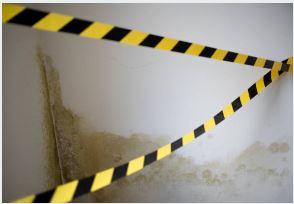

Professional commercial mold remediation follows established protocols designed to eliminate contamination while preventing cross-contamination and ensuring complete removal. These systematic approaches address immediate mold problems while implementing measures to prevent recurrence.
Step 1: Comprehensive Assessment and Containment
Professional commercial mold remediation follows established protocols designed to eliminate contamination while preventing cross-contamination and ensuring complete removal. These systematic approaches address immediate mold problems while implementing measures to prevent recurrence.
The remediation process begins with thorough contamination assessment using advanced detection equipment including moisture meters, thermal imaging cameras, and air quality testing devices. Professional technicians identify all affected areas, determine contamination severity, and assess structural damage.
Immediate containment prevents mold spore spread during remediation activities. This includes establishing negative air pressure zones, installing HEPA filtration systems, and creating physical barriers between contaminated and clean areas. Proper containment protects unaffected building areas and prevents worker exposure.
Assessment documentation includes photographic evidence, moisture readings, air quality measurements, and detailed contamination mapping. This information supports insurance claims, regulatory compliance, and remediation planning while providing baseline data for post-remediation verification.
Step 2: Source Identification and Moisture Control
Successful commercial mold remediation requires identifying and eliminating moisture sources that support mold growth. Common sources include plumbing leaks, roof infiltration, HVAC condensation, poor ventilation, and structural water intrusion.
Moisture control measures address immediate water sources while implementing long-term solutions to prevent recurrence. This may include plumbing repairs, roof maintenance, HVAC modifications, and building envelope improvements.
Professional moisture assessment utilizes specialized equipment to detect hidden moisture problems within building materials and structural components. Thermal imaging reveals temperature variations that indicate moisture presence, while moisture meters provide precise readings for different materials.
Step 3: Safe Mold Removal and Material Disposal
Professional mold removal follows strict safety protocols to protect workers and building occupants. Technicians utilize personal protective equipment including respirators, protective suits, and gloves while following established procedures for contaminated material handling.
Removal techniques vary based on contamination severity and affected materials. Non-porous surfaces may be cleaned using specialized antimicrobial solutions, while porous materials typically require removal and disposal as contaminated waste.
Commercial mold remediation often involves removing significant quantities of building materials including drywall, insulation, carpeting, and ceiling tiles. Professional disposal ensures compliance with environmental regulations while preventing contamination spread.
Step 4: Deep Cleaning and Disinfection
After removing contaminated materials, affected areas undergo comprehensive cleaning using EPA-approved antimicrobial solutions designed to eliminate remaining mold spores and prevent regrowth. This process includes surface cleaning, HVAC system decontamination, and air purification.
HVAC system cleaning represents a critical component of commercial remediation because ductwork can harbor extensive mold growth and distribute spores throughout buildings. Professional duct cleaning utilizes specialized equipment and techniques designed for thorough contamination removal.
Air scrubbing equipment removes airborne spores during and after remediation activities. HEPA filtration systems capture microscopic particles while negative air pressure prevents contamination spread to clean areas.
Step 5: Verification Testing and Prevention Implementation
Post-remediation verification ensures complete mold elimination through comprehensive air quality testing and visual inspection. Independent testing provides objective confirmation that remediation objectives have been achieved and buildings are safe for reoccupancy.
Verification testing includes air sampling, surface sampling, and moisture monitoring to confirm that mold levels have returned to normal background levels. Professional interpretation of test results ensures accurate assessment of remediation effectiveness.
Prevention measures implemented during remediation include moisture control improvements, ventilation enhancements, and monitoring systems designed to detect future problems before they escalate. These proactive measures provide long-term protection against mold recurrence.
Health Risks and Legal Liability in Commercial Mold Situations

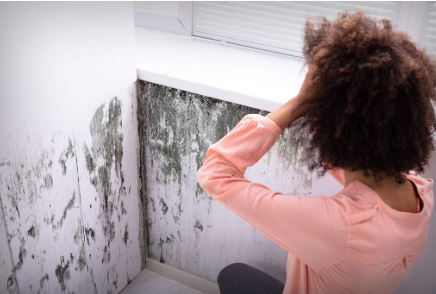
Commercial mold problems create significant health risks and potential legal liability that business owners must address promptly and professionally. Understanding these risks helps prioritize appropriate response and minimize exposure to claims and regulatory action.
Employee Health Impacts
Mold exposure can cause various health problems ranging from mild allergic reactions to serious respiratory conditions. Sensitive individuals may experience symptoms including coughing, sneezing, throat irritation, skin reactions, and headaches even with minimal exposure.
Prolonged exposure or high concentration exposure can lead to more serious health effects including asthma development, respiratory infections, and immune system suppression. Employees with existing respiratory conditions, allergies, or compromised immune systems face increased risks.
Commercial mold remediation becomes crucial for protecting employee health and maintaining safe working conditions. Employers have legal obligations to provide safe workplaces free from recognized hazards, including mold contamination that could affect employee health.
Workers’ Compensation and Liability Exposure
Mold-related employee illnesses can result in workers’ compensation claims, medical expenses, and lost productivity costs. Severe cases may involve long-term health effects requiring ongoing medical treatment and disability benefits.
Legal liability extends beyond workers’ compensation to include potential negligence claims if employers fail to address known mold problems promptly. Professional remediation and documentation help demonstrate reasonable care and appropriate response to mold situations.
Regulatory Compliance Requirements
While federal regulations don’t establish specific mold exposure limits, OSHA requires employers to maintain safe working conditions and may issue citations for mold-related hazards. State and local regulations may impose additional requirements for mold assessment and remediation.
Professional commercial mold remediation ensures compliance with applicable regulations while providing documentation necessary for regulatory inquiries or legal proceedings. Certified contractors understand regulatory requirements and maintain appropriate documentation.
Customer and Visitor Protection
Commercial businesses face liability exposure for customer and visitor mold exposure in addition to employee protection obligations. Retail establishments, restaurants, hotels, and other public-facing businesses must consider public health and safety implications.
Professional remediation protects businesses from potential customer claims while maintaining professional image and operational continuity. Prompt professional response demonstrates responsible business practices and commitment to public safety.
Common Causes of Commercial Mold Growth in San Antonio
Understanding common mold growth causes helps business owners identify risk factors and implement preventive measures. San Antonio’s climate and typical commercial building systems create specific vulnerability patterns that professional commercial mold remediation specialists address regularly.
HVAC System Problems
Addressing mold risks in commercial HVAC systems is central to implementing effective preventive strategies and long-term solutions tailored to San Antonio’s unique climate challenges. Inadequate maintenance, poor ventilation design, and condensation issues create moisture conditions that support extensive mold growth within ductwork and equipment.
Air conditioning systems can create condensation problems when insulation fails, drainage systems clog, or humidity control systems malfunction. These conditions allow moisture accumulation within concealed spaces where mold growth can establish and spread undetected.
Regular HVAC maintenance including filter replacement, drain cleaning, and system inspection helps prevent mold growth. Professional system design and installation ensure adequate ventilation and moisture control for San Antonio’s challenging climate conditions.
Roof and Building Envelope Failures
Roof leaks and building envelope failures create water intrusion that can quickly lead to extensive mold growth. San Antonio’s severe weather including hailstorms, high winds, and flash flooding can create sudden building envelope compromises requiring immediate attention.
Even minor leaks can create significant mold problems when moisture accumulates within wall cavities, ceiling spaces, or insulation systems. These hidden moisture problems often go undetected until mold growth becomes extensive and remediation costs escalate dramatically.
Professional building maintenance including regular roof inspections, sealant renewal, and prompt leak repairs prevents water intrusion that leads to mold growth. Early detection and repair minimize damage while reducing remediation costs.
Plumbing System Issues
Commercial plumbing systems present numerous opportunities for water leaks that can create mold growth conditions. Common problems include pipe failures, fitting leaks, drain backups, and equipment malfunctions that release water into building spaces.
Concealed plumbing within walls and ceiling spaces can leak for extended periods before detection, creating extensive moisture damage and mold growth. Regular inspection and preventive maintenance help identify problems before they create significant damage.
Commercial mold remediation often reveals extensive plumbing-related moisture problems requiring comprehensive repairs in addition to mold removal. Professional assessment identifies all moisture sources to ensure complete problem resolution.
Poor Ventilation and Humidity Control
Inadequate ventilation allows humidity levels to rise beyond levels that prevent mold growth. Commercial buildings require carefully designed ventilation systems that maintain appropriate humidity levels while providing adequate air exchange.
San Antonio’s high ambient humidity makes ventilation design particularly challenging. Commercial buildings require mechanical ventilation systems capable of managing both outdoor humidity and internal moisture sources including occupants, equipment, and processes.
Poor ventilation design or maintenance can create localized high-humidity conditions that support mold growth even when overall building conditions appear acceptable. Professional assessment identifies ventilation deficiencies and recommends appropriate improvements.
Advanced Commercial Mold Detection and Testing Methods
Professional commercial mold remediation utilizes advanced detection and testing methods that identify contamination extent, determine mold species, and assess health risks. These sophisticated techniques provide information necessary for developing effective remediation strategies and ensuring complete problem resolution.

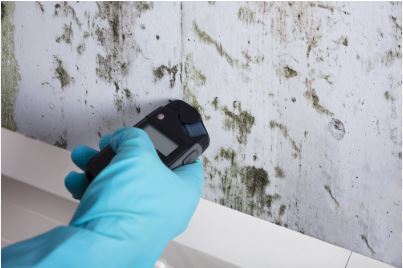
Moisture Detection and Mapping
Advanced moisture detection equipment identifies water intrusion sources and maps moisture distribution throughout commercial buildings. This information guides remediation planning and helps identify all affected areas requiring treatment.
Thermal imaging cameras reveal temperature variations that indicate moisture presence within building materials and structural components. These non-invasive techniques identify hidden moisture problems without requiring destructive investigation.
Moisture meters provide precise readings for different materials including wood, drywall, concrete, and insulation. Professional technicians use multiple measurement techniques to develop comprehensive moisture assessments that support remediation planning.
Air Quality Testing and Analysis
Professional air quality testing determines mold spore concentrations and identifies specific mold species present in commercial buildings. This information helps assess health risks and develop appropriate remediation strategies for different contamination types.
Air sampling techniques include both indoor and outdoor sampling to establish baseline conditions and determine contamination severity. Laboratory analysis provides detailed information about mold species, concentration levels, and potential health implications.
Continuous air monitoring during remediation activities ensures that containment measures effectively prevent spore spread while tracking remediation progress. Real-time monitoring allows immediate response to containment failures or unexpected contamination discoveries.
Surface Sampling and Material Testing
Surface sampling identifies mold contamination on building materials and helps determine cleaning requirements versus material replacement needs. Different sampling techniques provide information about contamination depth and material condition.
Material testing assesses structural integrity of mold-affected building components. Some materials can be effectively cleaned while others require removal and replacement depending on contamination severity and material characteristics.
Commercial mold remediation decisions depend on accurate assessment of material condition and contamination extent. Professional testing provides objective data necessary for developing cost-effective remediation strategies that address all contamination while minimizing unnecessary material removal.
Professional Mold Removal Techniques and Equipment
Effective commercial mold remediation requires specialized equipment and proven techniques designed to eliminate contamination while preventing cross-contamination and protecting building occupants. Professional remediation companies invest in advanced equipment and ongoing training to ensure optimal results.
Containment and Negative Air Pressure Systems
Professional containment systems isolate contaminated areas using physical barriers and negative air pressure to prevent spore spread during remediation activities. These systems protect unaffected building areas while ensuring worker and occupant safety.
HEPA filtration systems remove airborne spores while maintaining negative pressure within work areas. Multiple air changes per hour ensure continuous air cleaning while preventing contamination spread to clean areas.
Containment barriers utilize plastic sheeting, tape, and specialized sealing materials to create effective separation between contaminated and clean areas. Professional installation ensures complete isolation while maintaining necessary access for remediation activities.
Specialized Cleaning Equipment and Solutions
Professional commercial mold remediation utilizes commercial-grade cleaning equipment including HEPA vacuums, antimicrobial foggers, and specialized scrubbing equipment designed for different surface types and contamination levels.
EPA-approved antimicrobial solutions eliminate mold growth while preventing regrowth on treated surfaces. Different formulations address various mold species and surface materials while maintaining safety for building occupants and workers.
Ultrasonic cleaning equipment removes mold contamination from complex surfaces and equipment that cannot be easily replaced. This advanced technology provides thorough cleaning of valuable items including electronics, machinery, and specialized equipment.
Material Removal and Disposal Systems
Contaminated material removal follows strict protocols to prevent spore release and cross-contamination. Professional teams utilize specialized packaging, labeling, and transportation methods that comply with environmental regulations.
Negative air pressure systems maintain containment during material removal activities. HEPA filtration prevents spore release while materials are being removed, packaged, and transported from work areas.
Waste disposal requires compliance with local and federal regulations governing contaminated material handling. Professional remediation companies maintain appropriate permits and relationships with approved disposal facilities.
Prevention Strategies for Long-term Mold Control
Successful commercial mold remediation includes implementing comprehensive prevention strategies that address underlying moisture problems and create building conditions that discourage future mold growth. These proactive measures provide long-term protection while minimizing future remediation costs.
Moisture Management Systems
Effective moisture management forms the foundation of mold prevention in commercial buildings. This includes designing and maintaining building systems that control humidity levels, manage water intrusion, and provide adequate ventilation for San Antonio’s challenging climate.
Building envelope improvements including proper insulation, vapor barriers, and weather sealing prevent moisture intrusion while maintaining energy efficiency. Professional assessment identifies specific improvements needed for optimal moisture management.
Drainage systems including roof drains, foundation drainage, and landscape grading direct water away from buildings to prevent moisture problems. Regular maintenance ensures these systems continue functioning effectively throughout changing weather conditions.
HVAC System Optimization
Commercial HVAC systems require careful design and maintenance to prevent mold growth while maintaining occupant comfort and energy efficiency. This includes proper sizing, adequate ventilation, and effective humidity control for San Antonio’s climate conditions.
Regular maintenance including filter replacement, coil cleaning, and drain maintenance prevents moisture accumulation that supports mold growth. Professional maintenance programs ensure optimal system performance while identifying potential problems before they create mold growth conditions.
Indoor air quality monitoring helps identify developing problems before they become serious mold issues. Continuous monitoring systems track humidity levels, air quality parameters, and system performance to ensure optimal building conditions.
Building Maintenance Programs
Comprehensive building maintenance programs address potential mold growth sources through regular inspection, preventive repairs, and performance monitoring. These programs identify and address minor problems before they escalate into major mold situations.
Commercial mold remediation professionals often recommend specific maintenance protocols based on building characteristics, occupancy patterns, and local climate conditions. These customized programs provide optimal protection while managing maintenance costs effectively.
Staff training ensures building occupants and maintenance personnel understand mold prevention principles and can identify potential problems early. Early detection and reporting prevent minor issues from becoming major remediation projects.
Insurance Coverage and Business Continuity Planning
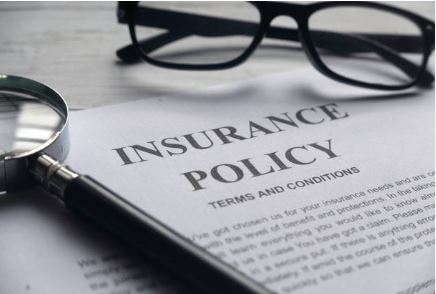
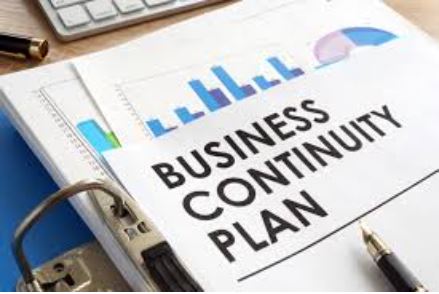

Commercial mold situations can create significant financial impacts through remediation costs, business interruption, and liability claims. Understanding insurance coverage and developing business continuity plans helps minimize these impacts while ensuring appropriate protection.
Insurance Coverage Considerations
Commercial property insurance policies vary significantly in mold coverage provisions. Some policies exclude mold damage entirely while others provide limited coverage for specific situations; understanding these nuances, including how deductibles apply, is crucial, as highlighted in the video “Prime Time Pro Tips with Heath Pipes from Prime Time Restoration San Antonio,” where Heath breaks down the insurance claims process and how rising deductibles can affect what’s truly covered. Understanding policy terms helps ensure adequate protection and appropriate response to mold situations.
Commercial mold remediation costs can range from thousands to hundreds of thousands of dollars depending on contamination extent and building size. Business interruption coverage may provide additional protection for lost income during remediation activities.
Professional documentation during remediation activities supports insurance claims and helps ensure appropriate coverage. Detailed records including photographs, testing results, and professional assessments provide evidence necessary for claim processing.
Business Continuity Planning
Mold contamination can require temporary business relocation or operational modifications that disrupt normal activities. Business continuity planning helps minimize these disruptions while ensuring employee safety and customer service continuity.
Alternative workspace arrangements may be necessary during extensive remediation projects. Planning for temporary operations helps maintain business relationships and minimize revenue losses during remediation activities.
Communication strategies keep employees, customers, and stakeholders informed about remediation progress and operational changes. Professional communication helps maintain confidence while demonstrating responsible business practices.
Financial Planning and Risk Management
Mold prevention investments provide significant returns through reduced remediation costs, lower insurance premiums, and avoided business disruptions. Financial planning should include both prevention and response capabilities to manage mold-related risks effectively.
Risk assessment helps identify specific mold vulnerabilities and prioritize prevention investments. Professional assessment provides information necessary for developing cost-effective risk management strategies.
Emergency response funds ensure adequate resources are available for immediate professional response to mold situations. Quick response prevents minor problems from escalating into major remediation projects requiring extensive resources.
Choosing Certified Commercial Mold Remediation Specialists
Selecting qualified commercial mold remediation professionals requires careful evaluation of certifications, experience, and capabilities. The right professional partnership provides effective remediation while ensuring compliance with regulations and industry standards.
Professional Certifications and Training
Certified mold remediation specialists maintain current certifications from recognized organizations including the Institute of Inspection, Cleaning and Restoration Certification (IICRC) and the National Association of Mold Professionals (NAMP). These certifications demonstrate commitment to professional standards and ongoing education.
Technician training includes both classroom instruction and hands-on experience with advanced equipment and techniques. Ongoing education ensures professionals stay current with evolving industry standards, new technologies, and regulatory requirements.
Specialized training for commercial projects addresses unique challenges including large-scale contamination, complex building systems, and regulatory compliance requirements that differ from residential applications.
Experience and Track Record
Commercial mold remediation requires specific experience with commercial building systems, occupancy considerations, and business continuity requirements. Contractors should demonstrate successful completion of projects similar in size and complexity to your requirements.
References from commercial clients provide valuable insights into contractor performance, reliability, and professionalism. Professional contractors readily provide detailed references and project examples demonstrating their capabilities.
Local experience becomes particularly valuable for understanding San Antonio’s specific climate challenges, building codes, and regulatory requirements. Experienced local contractors provide proven solutions for regional mold challenges.
Equipment and Technology Capabilities
Professional commercial mold remediation requires significant investment in specialized equipment including HEPA filtration systems, moisture detection equipment, and cleaning technologies. Contractors should maintain current equipment and demonstrate proper maintenance and calibration procedures.
Advanced technology including thermal imaging, air quality monitoring, and documentation systems provides superior results while ensuring comprehensive problem resolution. Professional contractors invest in technology that improves efficiency and effectiveness.
Safety equipment and protocols protect workers and building occupants during remediation activities. Professional contractors maintain comprehensive safety programs including proper protective equipment, training, and emergency procedures.
Comprehensive Service Capabilities
Commercial mold situations often require services beyond basic remediation including water damage restoration, structural repairs, and prevention system installation. Contractors with comprehensive capabilities provide coordinated solutions that address all related problems.
Emergency response capabilities ensure immediate professional response to urgent mold situations. Round-the-clock availability prevents minor problems from escalating while providing peace of mind for business owners.
Post-remediation support including verification testing, prevention recommendations, and ongoing monitoring helps ensure long-term success while protecting against future problems.
Conclusion
Commercial mold remediation represents a critical business challenge requiring immediate professional intervention to protect employee health, prevent property damage, and maintain operational continuity. San Antonio’s humid climate creates ongoing mold risks that demand proactive management and expert response capabilities.
The five proven steps outlined in this guide provide a comprehensive framework for addressing commercial mold situations effectively while minimizing health risks, property damage, and business disruptions. Professional remediation ensures complete contamination elimination while implementing prevention measures that provide long-term protection.
Prime Time Water Damage Restoration brings decades of commercial mold remediation experience to San Antonio businesses facing mold challenges. Our certified technicians utilize advanced equipment, proven techniques, and comprehensive safety protocols to deliver superior results while ensuring regulatory compliance and customer satisfaction.
From emergency response and comprehensive assessment to complete remediation and prevention implementation, we provide complete commercial mold remediation services designed to protect your business investment while ensuring safe, healthy working conditions for employees and customers.
Don’t let mold contamination threaten your business operations, employee health, or financial stability. Early professional intervention prevents minor mold problems from escalating into major remediation projects costing tens of thousands in damage and business disruption.
Is your San Antonio business showing signs of mold growth or moisture problems that could threaten operations and employee health?

